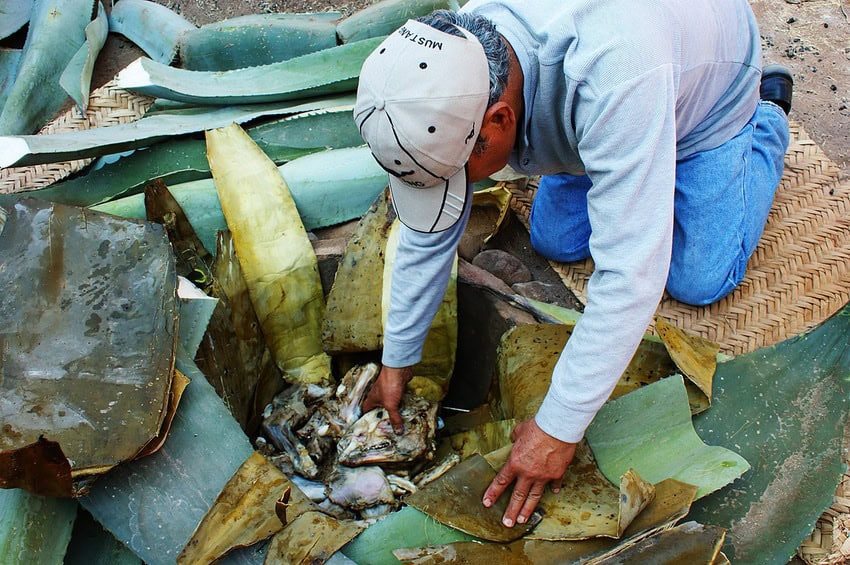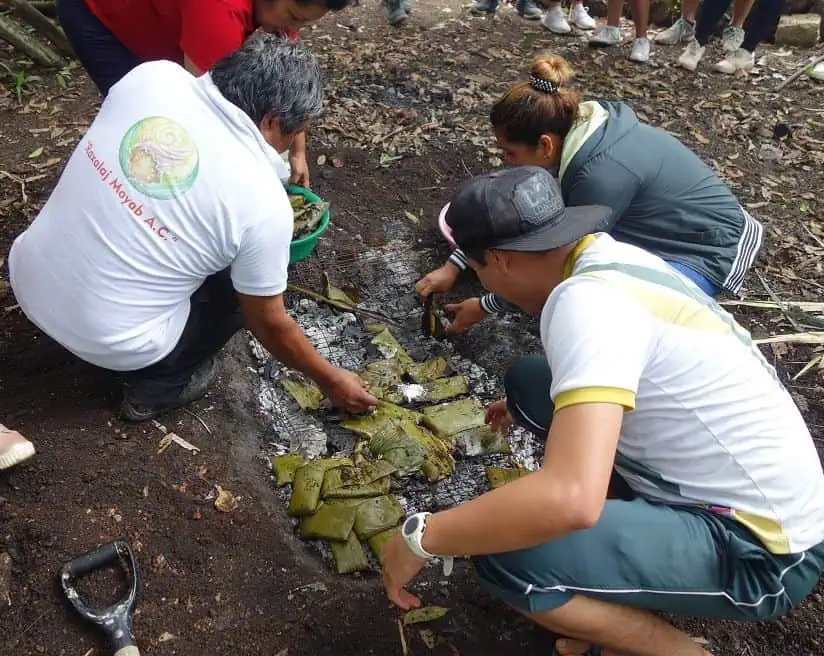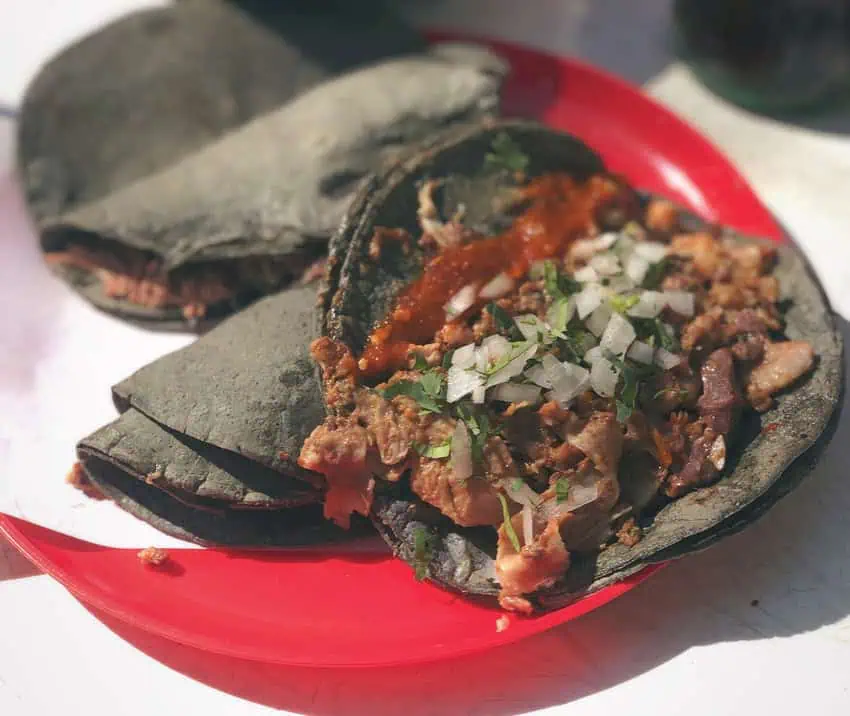The tradition and legacy of earth ovens

Nobody knows how long the earth has been used as an oven. However, evidence for the practice dates back at least 30,000 years. The Taino, an Indigenous people of the Caribbean, did much to popularize it, thanks to a fire pit cooking method they called “barabicu”: the sacred pit. After the Spanish began colonizing the Americas in the late 15th century, barabicu became barbacoa — and, later in the U.S., barbecue.
The method of cooking the word barbacoa described — slow-cooking in a pit with the meat or fish arranged on some sort of makeshift grill — may have been novel to the Spanish. But earth ovens existed in Mexico long before they arrived. The Maya pib, for instance, predates the colonial period by hundreds of years, if not far more. Maya settlements date back well over 3,000 years, so earth ovens may have been used for far longer than written evidence suggests.

The Maya pib and cochinita pibil
However old the tradition, it’s continued today in dishes like the iconic tamal, pibipollo — a large round tamal eaten on Hanal Pixán, the Maya Day of the Dead — and the signature Yucatán specialty cochinita pibil. The latter, in its modern incarnation, is made with pork marinated in annatto seed-sourced achiote paste, bitter Seville orange juice, cumin and other spices, before being wrapped in banana leaves and slow-roasted. It’s served in a variety of presentations, including in tacos.
Domesticated livestock like sheep, pigs and cattle were introduced to Mexico by the Spanish. Before their arrival in the early 16th century, cochinita pibil was made not with pork, but with wild game. That was the case, too, with barbacoa, which in olden times was prepared with animals as diverse as turkey, deer, rabbit and iguana.
The pib itself varies in size according to what is being cooked. Vegetables like corn and the foods it helps make, like tamales, don’t require a deep pit and can be cooked in an hour or less. Cochinita pibil or barbacoa, meanwhile, need a larger pit and are typically cooked overnight. The heat comes from the embers of fired wood and heated stones, and once the meat has been wrapped in banana or maguey leaves, the pit is covered to trap the heat. These pits can be reused but must be cleaned with embers removed before the next feast.
The traditional joys of barbacoa hidalguense
Barbacoa, a weekend favorite in Mexico, is made in several states. But it’s most famously produced in Hidalgo, where municipalities like Actopan are synonymous with Mexican pit-cooked barbecue. In the Hidalgo tradition, lamb is the meat of choice, with cuts set on a grill and wrapped in pencas (maguey leaves) to be cooked overnight in an earthen pit. The meat is generally shredded for tacos, while drippings are caught in a pot and used to make consomé.


The state’s proximity to Mexico City ensures many barbacoyeros serve their food in the capital, along with specialty items like pancita (stomach-stuffed offal) and moronga (black pudding). As for the cooking itself, it’s done in pits, with wood such as mezquite stoking the fire and imbuing the meat with sought-after smoky flavors sealed in via wrapping with maguey leaves.
The world’s most fulfilling tamal
The Maya pib is also used to make tamales, of course. The origin of the current tradition of eating tamales on Día de los Reyes Magos is thought to be founded upon an ancient agricultural ritual to promote a good planting season. Tamales are made from masa, a corn-based dough, and corn was a staple crop of the Maya and many other Indigenous groups.
The biggest tamal of them all, however, isn’t found in the Yucatán but in the Huasteca region which stretches across seven Mexican states, including Veracruz, Puebla and Hidalgo. The zacahuil, as it is known, is a feet-long, party-style tamal that can feed up to 50 people or more. Pork or chicken and several chili peppers are also typically used in its preparation, with the cooking traditionally done in an earth oven.
It should be noted that earth ovens aren’t just used to make iconic cuisine: they’re also the tool used to make Mexico’s national liquor. Artisanal Oaxacan mezcals, for example, owe much of their smoky flavor to the days-long roasting process they undergo in a stone-lined pit.


The living legacy of earth ovens in Mexico
Some mezcals, like tequila, are roasted in what are now more conventional ovens. As people have migrated from rural areas to cities, recipes for some traditional dishes, too, have been adapted to indoor kitchens and modern appliances. But the earth oven remains alive and well in Mexico and it isn’t hard to understand what accounts for its continued use.
Part of the enduring appeal of the earth oven is the amount of flavor it produces. “The wood we cook it in, the leaves we top it with, the earth it’s buried in — those things give the flavor,” chef David Cetina told AFAR in 2019. “The best machine in the world can’t give the flavor of food cooked underground.”
However, the ancient texts, says travel writer Vaitiare Rojo, also reveal a more sacred dimension. “According to the codices, ground ovens are a tribute to Mother Earth, who in addition to giving us her fruits, offers the opportunity to prepare food in her own bosom. Its meaning, in addition to its practicality, is beautiful and profound.”
Source: Mexico News Daily

